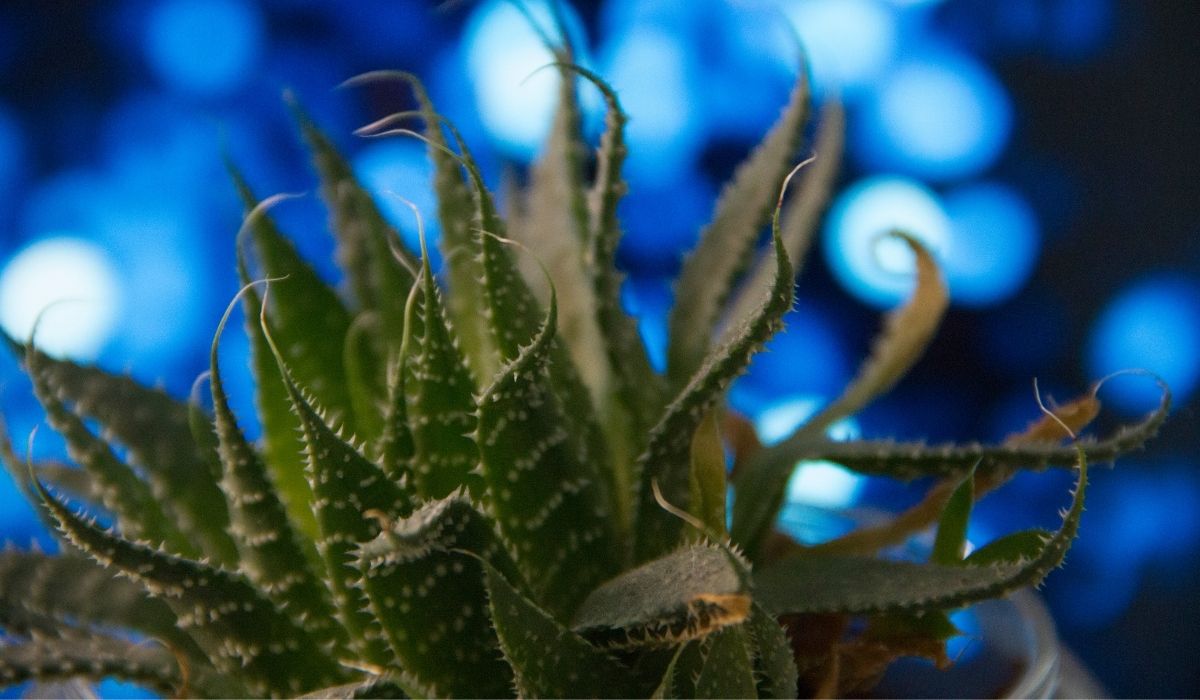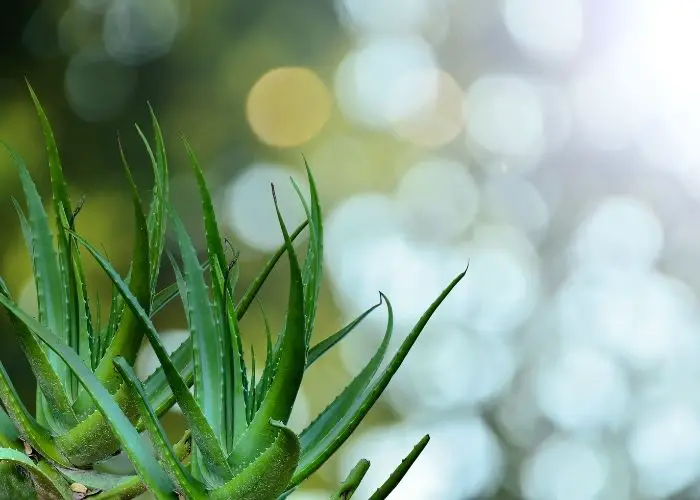Last Updated on January 23, 2022 by Fabiola L.
Finding the ideal aloe plant temperature is not complicated; all you have to do is remember that the aloe is succulent and loves warmth. Moving your pots inside as temperatures drop can be a hassle. But it’s essential if you want to welcome spring with a garden full of foliage and blooming flowers.
The exact process applies for succulents too. For example, aloe vera is perfect as a tabletop decoration, but it can also grow to be a significant plant on your patio. Want to keep it for years to come, but you live in an area that gets freeze? Then you’ll have to bring it inside.
So what’s the perfect temperature? Can it overwinter in a sheltered shed in the yard, or do you have to keep it at home? Here’s what you need to pay attention to when handling the aloe plant temperature.
Aloe Vera Temperature – What Does Your Plant Need
Before diving into the subject, it’s important to notice that several aloe species can tolerate low temperatures. However, the aloe vera is not a cold-hardy plant and will suffer if planted outdoors, especially outside the recommended hardiness zones. So what does the aloe plant temperature range? Anywhere between 40°F and 85°F.
The natural habitat of the aloe vera is tropical and semi-tropical climates, like Africa and the Arabian Peninsula. In the US, they thrive in USDA Hardiness Zones 8 to 11.
As part of the succulent family, aloe can tolerate long drought periods. But when it comes to temperature, it won’t handle cold. The reason why the ideal aloe plant temperature can’t be close to freezing is the plant’s anatomy.
The leaves are filled with a viscous gel that can freeze as temperatures drop. The frozen gel then permanently damages the leaves, turning them brown or black.
Artificial Light And Temperature
Aloe vera needs sunlight at least 6 to 8 hours of bright sunlight. When you can’t naturally provide this amount of light, you might reach for artificial lighting. However, artificial UV lamps can raise the temperature around the plant. This could lead to sunburns and brown leaves. It’s ironic since the gel in the aloe vera leaves is often used to soothe sunburns!
Aloe Vera Plant Temperature In Winter
Winter temperatures are the dreaded enemy of the aloe vera. The best aloe plant temperature should never fall below 40°F for more than a few hours. When faced with freezing temperature for an extended time, the aloe will suffer freeze damage and eventually die.
When planting aloe vera plants outside in-ground, you must beware of the night temperature. The aloe can survive sight night and day differences as a dessert plant, but not more than 20°F. If the summer night temperatures in your area fall below 60°F, it’s best to keep your aloe potted.
Can You Keep Aloe Vera Outside In Winter?
There are many perks of growing aloe vera outside, just think of the yellow flowers it can develop. But if you live outside USDA Hardiness zones 8 to 12, it’s practically impossible.
The lowest aloe plant temperature for survival is 35°F and only for a short period. A whole night outdoors can cause damage beyond repair. But if your area experiences occasional low temperatures, it’s best to follow the weather forecast.
Before chilly nights, carefully cover the plant with a large plastic container or a blanket and place an artificial light underneath to keep it warm. Be careful not to break any leaves and put the light away from the cover and the plant.
How To Provide The Ideal Temperature For Aloe Vera Plant
After purchasing your aloe vera plant, it’s time to research the best location in your home. It needs a full day of sunlight, but exposing it too quickly to intense light leads to burns and dried-out leaf tips. A south or west window is an ideal choice.
Please keep it away from draft and don’t let the leaves touch the window. As the glass gets hot, it can burn the leaves.
Don’t place the aloe vera next to a heat source. While it can tolerate dry air, a continuous blast of hot air is not a good idea. It will increase the plant’s watering needs. Try to keep the aloe plant temperature steady, from 50°F to 60°F in winter and 70°F to 80°F during the summer.
Avoid drastic changes in light and temperature. If you have to move the plant, slowly expose it to the new spot.
Air Purifying Live Aloe Vera Indoor House Plant
How To Revive A Freeze Damaged Aloe Plant
If you forgot to bring your aloe vera plant inside during a freezing night, there’s a good chance it suffered freeze damage.
Start by bringing the plant inside. Inspect the plant for any mushy and glossy leaves. If you have an established plant that is a couple of years old, check the tips first. Older plants are hardy and won’t die as easily as a new fragile plant.
Leave the plant at room temperature but don’t water it. Let it settle, and the injured leaves will turn dark and fall off. You can also use sterilized shears to cut the damaged parts. If the plant doesn’t seem to get better after a few weeks, check the root for root rot. Prolonged exposure to low temperatures leads to root decay in aloe plants.
When new growth appears in the center of your plant, it’s a sign the plant is getting healthy.
Final Say: Aloe Plant Temperature And Effects
The optimal aloe plant temperature is anywhere between 50 and 85. Different aloe species can survive temperatures as low as 25, but the aloe vera is a tropical plant and prefers a warmer climate.
If you live in the warmer zones, you can plant aloe vera outside. However, when night temperatures fall around 40°F, it’s vital to protect the plant. It’s best to plant aloe vera in pots and bring it inside no later than September. It can survive the winter at room temperature and close to a sunny window.
When the aloe plant temperature is too high, it can lead to burns. So be careful when placing UV lambs nearby. While the light can help the plant develop nicely, it can also burn the tips and deprive its moisture.
Mary is a passionate gardener who loves spending her days getting her hands dirty and nurturing her plants. She‘s an avid reader of gardening magazines and is always looking for new ways to make her garden thrive. When not outside tending to her plants, Mary can be found inside reading up on the latest gardening trends, comparing notes with fellow gardeners, and finding the perfect pottery planter for her next planting project.




